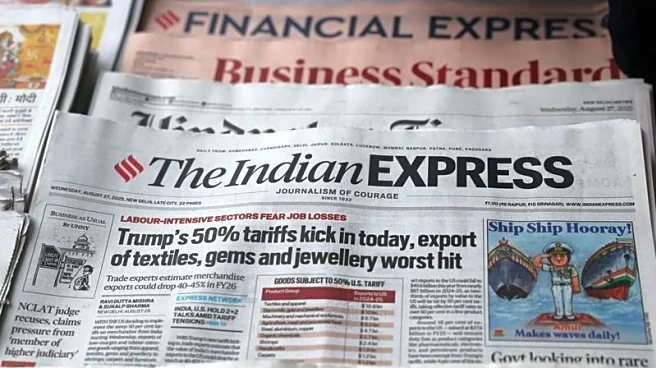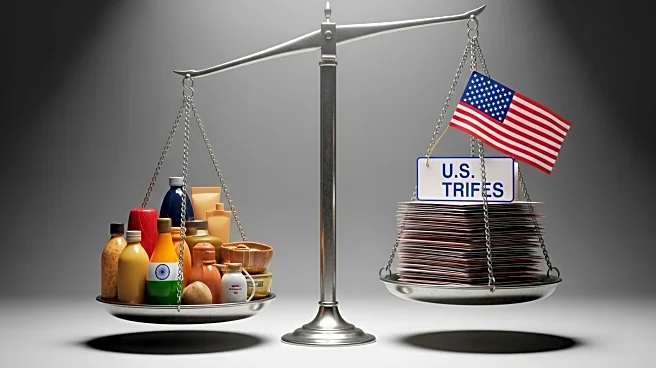What's Happening?
Ross Stores has announced plans to raise prices in response to the expiration of a trade loophole that allowed some retailers to avoid tariff hikes imposed by President Trump. The company, which operates nearly 1,900 locations across the United States, is preparing for potential price increases on imported goods as the loophole expires on August 29. During a recent earnings call, CEO James Conroy and COO Michael Hartshorn discussed the company's strategy to mitigate the impact of tariffs, including testing price increases in certain areas. Despite these challenges, Ross Stores reported a 2% year-over-year increase in comparable store sales for the second quarter, driven by higher customer traffic and basket size. However, the company's operating income dipped by 3% due to tariff-related costs.
Why It's Important?
The decision by Ross Stores to raise prices highlights the broader impact of tariffs on the retail industry. As tariffs increase costs for imported goods, retailers like Ross must navigate the balance between maintaining competitive pricing and absorbing additional expenses. This situation underscores the challenges faced by discount retailers in preserving their value proposition while dealing with external economic pressures. The expiration of the tariff loophole could lead to price hikes across the industry, affecting consumer spending and potentially altering shopping habits. Retailers that rely heavily on imported goods may face increased operational costs, which could impact their profitability and market positioning.
What's Next?
As Ross Stores implements price increases, the company will closely monitor customer reactions and adjust its strategy accordingly. The expiration of the tariff loophole may prompt other retailers to follow suit, leading to broader price adjustments in the market. Ross Stores plans to continue expanding its retail presence, with plans to open approximately 90 new locations this year. The company remains focused on offering high-quality, branded merchandise at competitive prices to reinforce its value proposition. Stakeholders, including consumers and industry competitors, will be watching closely to see how these changes affect the retail landscape.












